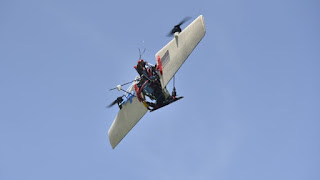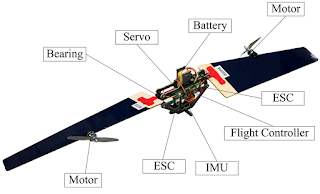 |
| Bluetooth 5 |
Many
of us have experienced, a stoppage of music due to loss of connection
while roaming freely in home with your speakers plugged in your ears.
Its due to poor connection or poor range of your bluetooth.. But
losing connection is a concept of the past with brand new Bluetooth
5. This means that you’ll be in the kitchen with your phone and can
start playing music from the speaker in your bedroom. Isn’t the
future is so bright???
Let’s
check some history
of bluetooth.. Bluetooth is a wireless connection standard
intended to connect disparate devices and transfer data over short
distances. It is fittingly named after 10th-century king Harald
Bluetooth, who united Denmark's tribes into a single kingdom.
Bluetooth was invented by Ericsson in 1994, but it wasn't until 1998
that the Bluetooth Special Interest Group (Bluetooth SIG) was
established by Ericsson, IBM, Intel, Toshiba and Nokia, and 1999 when
it was initially standardised. The last major version of the
standard, Bluetooth 4.0, was officially rolled out in 2011, while the
last iterative update was Bluetooth 4.2 on December 2, 2014.
The
next Bluetooth Standard, Bluetooth
5, brings with it some serious upgrades including increased
range, speed, and broadcast messaging capacityIt's faster, has longer
range, and can transfer more information. Bluetooth 5 also promises
twice the data transfer speed of the previous version and quadrupled
range compared to Bluetooth 4.2.
The
biggest improvement is Bluetooth 5 has enough bandwidth to support
two sets of wireless devices at the same time. This will come in
particularly useful for things like portable speakers. This could
mean speakers in different rooms, or the ability to listen to support
two sets of headphones without having to share a bud with your
friend.
The
new standard will also transfer data at double the speed of v4.2,
from 1Mbps to 2Mbps and the capacity of data broadcasts will increase
800 per cent. i.e, Bluetooth 4.2, supporting the transmission of 31
octets and Bluetooth 5 supports 255 octets of data. With Bluetooth
5.0 being able to hold and transmit far more data, it should be able
to preserve sound far better when it leaves the broadcast device.
Bluetooth 5 can also detect interference at the edges of the 2.4GHz
and neighbouring LTE band, and automatically prevent it, which should
make for clearer music listening from any wireless device.
Manufacturers
of mobile devices will be able to use the Slot Availability Mask
(SAM) function to prevent any kind of interference in adjacent radio
frequency bands.
It’ll
also help facilitate additional location-based functionality. In
particular, it should boost the uptake of Beacon technologies like
Apple iBeacon and Samsung Proximity which will result in
significantly improved indoors navigation in shopping centres and the
like. Bluetooth 5 will add location and navigation functionality, so
that Beacons can transmit custom information without connection and
application barriers.
Bluetooth
5 allows exchanging twice the amount of data and the consequence is
that the device consumes half the power to exchange the
same data. Bluetooth 5 could also improve battery life. Because it's
more efficient, it'll use less energy, which should mean longer
battery lives for wireless speakers and headphones. For the same
power envelope,
The
adoption of Bluetooth 5 comes at a crucial time of industry growth,
with ABI Research expecting 48 billion internet-enabled devices to be
installed by 2021, of which nearly one-third will include Bluetooth.
While your existing phones, speakers and equipment may work with
Bluetooth 5 devices, they almost certainly won't benefit from its
extra capabilities. That means you'll need to buy all-new Bluetooth
5-ready gear to take advantage of its entire expanded feature set.
Samsung
Galaxy S8 and Galaxy S8 Plus are the first phones released using the
new technology. By having Bluetooth 5, the Galaxy S8 phones have been
gifted a "dual audio" mode that will let them wirelessly
stream music to two Bluetooth devices at one time.
It
is an essential element for bringing everyday objects into the
connected world. With the launch of Bluetooth
5, Bluetooth technology continues
to evolve to meet the needs of the industry as the global wireless
standard for simple, secure connectivity. Bluetooth 5 isn’t perfect
and won’t solve all your streaming problems. Its a transformative
update that promises a better 4x range, 2x speed and 8x broadcasting
message capacity.


